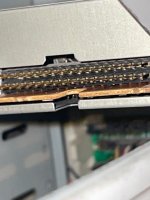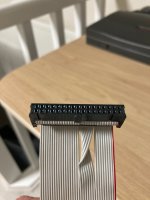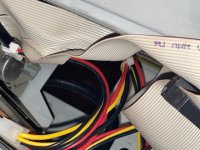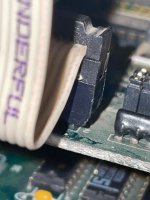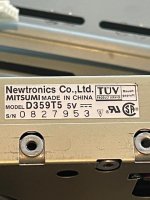No problem with leaving the CD Rom power in Patrick, and the floppy connector cable looks fine. When you boot up the computer, do you see the (green) LED light flash on the floppy drive? Also, if you insert a floppy does the LED come on and does the floppy drive make any noise? If the answer to both is no, then I suspect the floppy drive is not getting power or that something happened when you got the spark. Do you have a multimeter? If so, disconnect the power to the floppy, boot up the computer and measure how many volts you have on the floppy power connector (it is DC current).
@daver2 - any further ideas?

